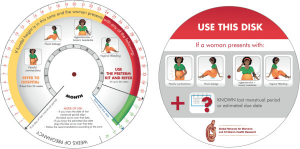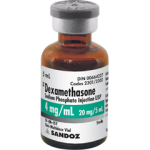About Antenatal Corticosteroids
Each year more than one in ten babies are born preterm and over one million die due to complications of preterm birth, most commonly respiratory complications. It is estimated that around 400,000 lives could be saved each year with effective, high coverage antenatal corticosteroids (ANCS).

Courtesy reproductive-health-journal
Commodity Introduction
Over one million babies die each year due to preterm complications, most commonly from Respiratory Distress Syndrome (RDS) resulting from lung immaturity.[1] Studies have found that the antenatal corticosteroid (ACS) injection for women at risk of preterm delivery is the most effective intervention to reduce the risk of RDS for preterm babies, and is the standard of care in most high-income countries. Unfortunately, in middle- and low-income, high-burden countries, ACS coverage is only 10 percent.[2]
Commodity Context
Preventing preterm birth has had limited success to date and is a globally recognized research priority. The dramatic reductions in deaths due to preterm birth in high-income countries have been primarily through neonatal care, although the later addition of ACS was still associated with major, additional mortality and morbidity reduction. The equity gap for survival of preterm babies is over 20-fold between the richest and poorest countries, and has increased over the last decade. Currently, there is only an estimated 10% coverage of indicated cases of women in preterm labor with ACS injections in middle/low income countries, compared to an estimated 90% in high-income countries.[3] Immediate action is needed to close this coverage gap and save lives.

Photo courtesy of hexal-elements; tradekorea
Products Available
Dexamethasone sodium phosphate (Dexa-) and a combination of betamethasone sodium phosphate with betamethasone acetate (Beta-) are the most popular ACS for fetal lung maturation. Both beta- and dexa- are administered as intramuscular injections. Dexamethasone for injection is readily available from a variety of companies in generic form. In India, market prices range from about $0.65 to $0.24 per 24mg of active ingredient. Injectable betamethasone is less commonly available and more costly. Dexamethasone’s low cost and wide availability makes it an excellent option for public procurement.
Product Efficacy
ACS treatment for women at risk of preterm delivery is considered to be the most effective intervention for the prevention of RDS, reducing early neonatal mortality and morbidity. According to a meta-analysis of 18 randomized controlled trials in a Cochrane Review that measured mortality, ACS reduced neonatal mortality by 31% and moderate/severe RDS by 45%. A meta-analysis of the only 4 RCTs available from middle-income countries found a higher effect of 53% reduction in the neonatal mortality rate.[3] The cost-effectiveness of ACS for use in Africa and Asia has been estimated at just under US$300 per death averted, which is highly cost effective and would give added gains in reduced morbidity in addition to the number of deaths averted[4].
Common Barriers
Currently only Dexa- is listed on the WHO Essential Medicines List[5] . Since ACS have maximal effect if administered at least 24 hours before birth, their administration can be difficult in low-income settings where obstetric care is limited and home births are common.
Studies show that awareness and knowledge of ACS is a key factor in determining use among providers. In addition, the high cost of Beta- (~$40/course) and supply shortage also hinder wider use of ACS treatment in low-resource settings.
For more information on ACS, please visit the UN Every Woman Every Child initiative webpage.
References
- Black, R. E., Cousens, S., Johnson, H. L., Lawn, J. E., Rudan, I., Bassani, D. G., et al. (2010). Global, regional, and national causes of child mortality in 2008: A systematic analysis. The Lancet, 375(9730), 1969-1987.
- Lawn, J. E., Ruban, I. & Rubens, C. (2008). Four million neonatal deaths: Is the global research agenda evidence-based? Early Human Development, 84(12), 809-814.
- Mwansa-Kambafwile, J., Cousens, S., Hansen, T. & Lawn, J.E. (2010). Antenatal steroids in preterm labour for the prevention of neonatal deaths due to complications of preterm birth. International journal of epidemiology, 39(suppl 1), i122-i133.
- Darmstadt, G.L., Walker, N., Lawn, J.E., Bhutta, Z.A., Haws, R.A., & Cousens, S. (2008). Saving newborn lives in Asia and Africa: cost and impact of phased scale-up of interventions within the continuum of care. Health Policy and Planning, 23(2), 101-117.
- World Health Organization. (2013). WHO model list of essential medicines for children: 4h list (updated) April 2013.
